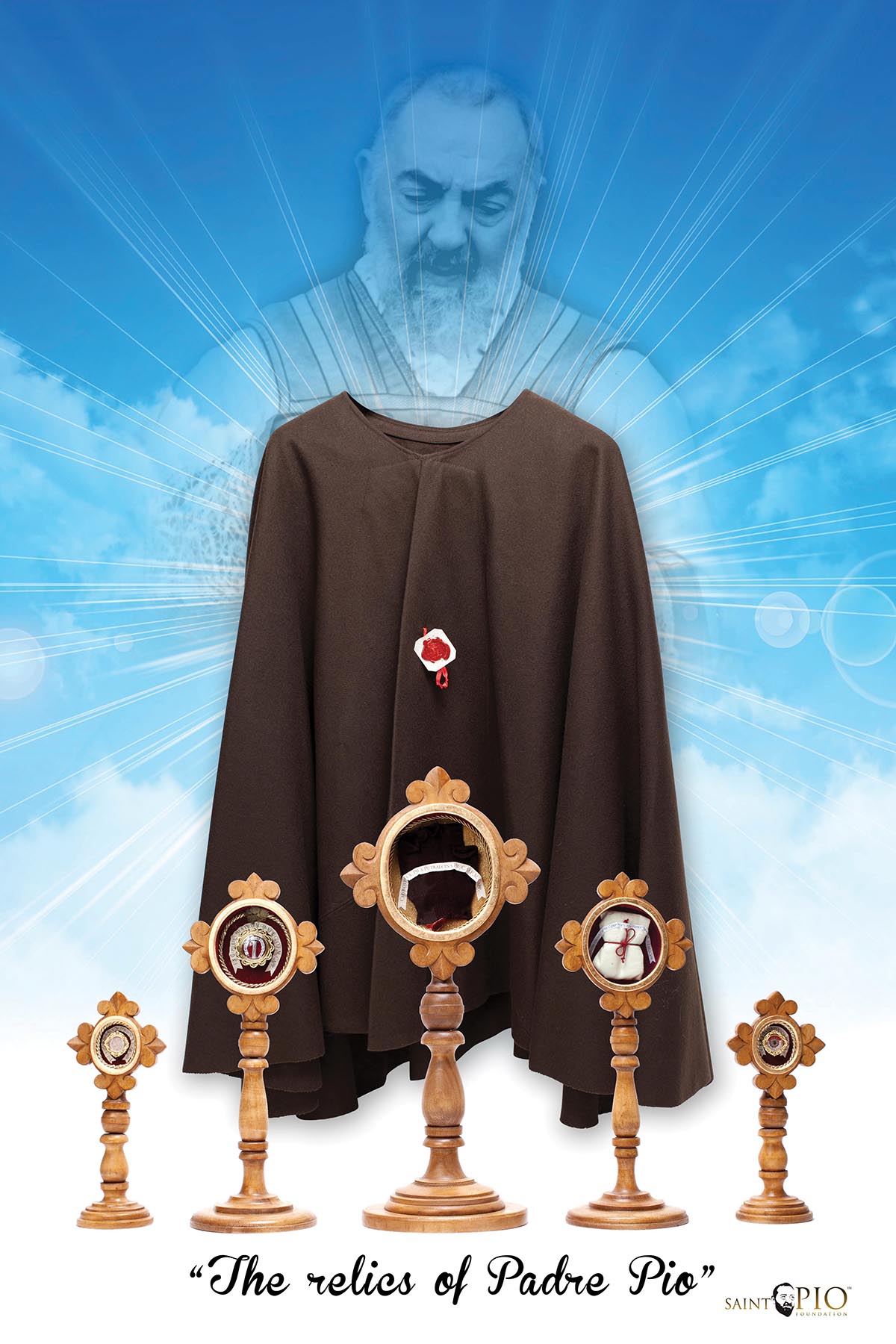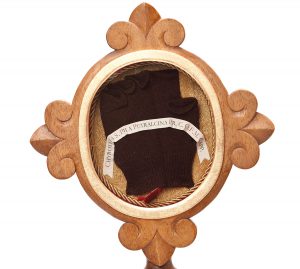
The relics of St. Pio of Pietrelcina (better known as St. Padre Pio) will be visiting the Cathedral of Saint Joseph on Sunday, September 29, from 7:30 a.m. to 3:30 p.m. A Mass to honor St. Pio will be celebrated at 4 p.m.
This event is part of the “Relics Tour of St. Padre Pio” sponsored by the St. Pio Foundation, a nonprofit charity dedicated to the promotion of the spiritual charism of St. Pio.
The relics of St. Pio available for public veneration will include his glove, a crust of the wounds of his stigmata, cotton gauze with blood stains, a lock of hair, his mantle, and a handkerchief soaked with his sweat hours before he died.
Cathedral of Saint Joseph rector Father James Morgan sees this as a great opportunity for the people in the diocese.
“For the Cathedral of Saint Joseph to be chosen as a host site for the relics is indeed a privilege for all the faithful of the diocese who have known of St. Padre Pio and have always wanted to encounter the saint in a personal way,” Father Morgan said.
The veneration of relics is as old as the Church herself. Father Morgan says in the very beginnings of the Church, the first bishops and priests of Rome celebrated Mass over the graves of martyred saints, often becoming martyrs themselves in the process. They venerated them because their lives had a great impact on the faith.
“Christians have been venerating the relics of saints for centuries, first, because it recognizes a particular saint’s holiness of life. Thus, it then inspires us to embrace holiness of life,” Father Morgan said. “Second, and more importantly, we venerate relics as a form of worship to God. We don’t worship the relics. We worship the God who made their saintly lives a testament to His goodness and omnipotence.”
He says venerating relics can have a supernatural effect. Many healings have been recorded after the faithful visit or venerate relics or holy sites. At the very least, you should expect to see something extraordinary in the ordinary.
 The word relic means “a fragment” or “remnant of a thing that once was but now is no longer.” The relics of St. Pio that will be on display will be from all three classes of relics:
The word relic means “a fragment” or “remnant of a thing that once was but now is no longer.” The relics of St. Pio that will be on display will be from all three classes of relics:
- First class – a relic of the body or fragments of the body of the saint, in this case the lock of hair and crusts from St. Pio’s wounds
- Second class – something personally owned by the saint, in this case the mantle
- Third class – items a saint touched or that have been touched to a first- or second-class relic of a saint, in this case the glove and handkerchief
Father Morgan says St. Pio has left an “indelible mark on the faith of believers,” perhaps only behind two other modern-day saints, St. John Paul II and St. Mother Teresa of Calcutta. His story is one of a powerful faith with plenty of difficulties and trials along the way.
“He had the gift to read into people’s souls. He received the stigmata (wounds of Christ) that were both a blessing and a curse. Healings happened when he prayed over someone, and they continue to happen through the invocation of his intercession,” Father Morgan said.
If you want to learn more about St. Padre Pio, a more in-depth bio will be available at our new saint’s page on the diocesan website September 15. Visit www.sfcatholic.org/saints to read more about him before visiting the relics.


